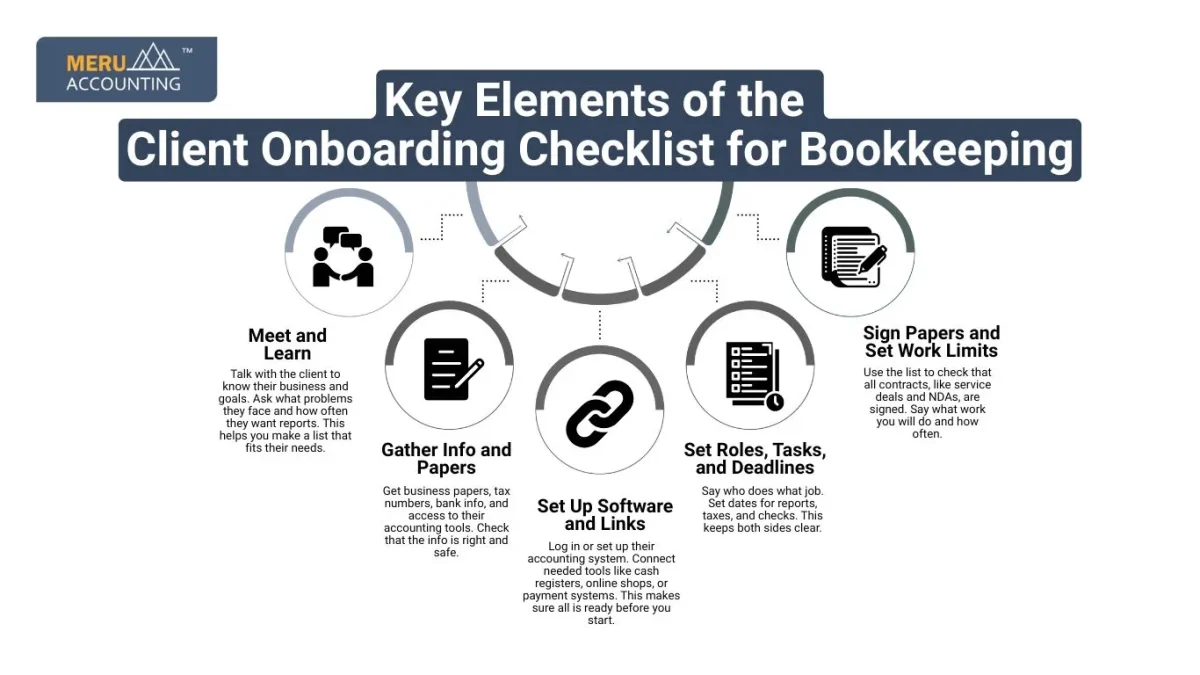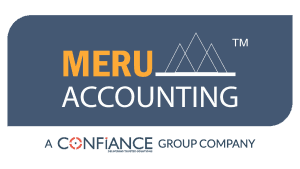Client On-boarding Checklist for Bookkeeping
Bringing in a new client for bookkeeping starts with a smooth and clear process. A strong first step builds trust and shows your client that you are well-prepared. It also sets the tone for the rest of your work together. When you begin right, the whole journey becomes easy to handle and less stressful for both sides. A client on-boarding checklist for bookkeeping helps you collect the right details, set clear goals, and create a better flow in your tasks.
This blog explains how to use this checklist the right way. You will learn what to include, which tools can help, and how to give every client the best start possible.
Why You Need a Bookkeeping Onboarding Checklist
When you start with a new client, many steps come up. Without a clear plan, you might miss details or cause delays. A client on-boarding checklist for bookkeeping shows you what to do at each stage. It helps you stay organized and gives the client a smooth, professional experience.
This checklist helps you collect all needed documents, learn the client’s business, and set up the right systems. Whether you work with a small business or a larger firm, it gives you the structure to do your best. Following the checklist also helps you spot the client’s special needs early, so you can offer services that add more value.
Technology and Tools for Efficient Client On-boarding
In today’s world, tools make the job smoother. Digital tools help track tasks, store files, and share info fast. A smart checklist for bookkeeping should include tech steps, too.
Tools You Should Use
- CRM systems: Track all client information in one place
- Cloud accounting software: QuickBooks, Xero, Zoho Books
- Document management tools: Google Drive, Dropbox, DocuSign
- Communication tools: Slack, Zoom, Microsoft Teams
How Tech Helps
- Speeds up client info sharing
- Reduces back-and-forth emails
- Keeps files safe and easy to find
- Let teams work together better
When your checklist links with your tools, you waste less time. You also serve clients better and faster.
Key Elements of the Client Onboarding Checklist for Bookkeeping
A good checklist for bookkeeping should have these steps. This keeps the work clear, neat, and complete:
Meet and Learn
Talk with the client to know their business and goals. Ask what problems they face and how often they want reports. This helps you make a list that fits their needs.
Gather Info and Papers
Get business papers, tax numbers, bank info, and access to their accounting tools. Check that the info is right and safe.
Set Up Software and Links
Log in or set up their accounting system. Connect needed tools like cash registers, online shops, or payment systems. This makes sure all is ready before you start.

Set Roles, Tasks, and Deadlines
Say who does what job. Set dates for reports, taxes, and checks. This keeps both sides clear.
Sign Papers and Set Work Limits
Use the list to check that all contracts, like service deals and NDAs, are signed. Say what work you will do and how often.
Essential Items in the Client On-boarding Checklist
To build a solid client on-boarding checklist for bookkeeping, it’s essential to know what items will guide your workflow and improve service quality. Each one on the list ensures a smooth start and reduces the chance of confusion or delays later on.
Key Information to Collect
- Business name and legal structure
- Contact person and their details
- Type of industry
- Scope of bookkeeping work
- Start date and records
Documents to Request
- Bank statements (last 6-12 months)
- Previous financial reports
- Invoices and receipts
- Tax ID and registrations
- Payroll records, if any
Other Checklist Items
- Access to accounting software
- Logins for banking and payment portals
- Chart of accounts setup
- Communication plan (weekly, monthly)
- List of key deadlines
Having this full client on-boarding checklist helps you work without delays. It also ensures you have everything to get started right.
Benefits of Following a Detailed client on-boarding Checklist
Bookkeepers use a client on-boarding checklist for bookkeeping because it streamlines the process, cuts down on errors, and keeps the experience consistent. Whether you work alone or in a team, following this checklist helps you avoid missing any important steps during client intake.
1. Saves Time and Avoids Mistakes
When you have all the information from the start, you spend less time asking for missing items. You also avoid making errors due to gaps in records.
2. Builds Client Trust
Clients feel safe when they see you have a plan. It shows you care about doing things right.
3. Makes You Look Professional
A good checklist adds to your brand. It tells clients that you have systems, not just skills.
4. Keeps Everyone Aligned
It ensures your team knows the steps, too. Everyone can check the same list and update the progress.
5. Helps with Scaling
As your firm grows, a checklist helps you train others. You won’t have to start from scratch every time.
At Meru Accounting, we know that strong systems lead to great service. That’s why we use a well-built client onboarding checklist in every project. We send a welcome pack with the full checklist. We assign a point person to guide the client. We use cloud tools to collect and store information. We review all data within the first week. We do not use a standard checklist. We adjust it based on business type and client goals.
FAQs
- What is a client on-boarding checklist?
It is a step-by-step list used when taking on a new client. It helps gather all the needed information to start bookkeeping work.
- Why is client on-boarding important in bookkeeping?
It ensures you have all the details, tools, and records in place. This helps avoid errors and delays in financial tasks.
- What should a bookkeeping checklist include?
It should include client data, access to tools, key documents, and a timeline of tasks. It must be clear and simple.
- Can digital tools help with client on-boarding?
Yes. Tools like CRMs, cloud software, and e-sign tools speed up the process and keep things secure.
- How long does client on-boarding take?
It depends on the client, but with the right checklist and tools, most onboarding is done in 3–7 business days.
- Who can benefit most from using a client on-boarding checklist for bookkeeping?
Small businesses, startups, solo bookkeepers, and accounting firms can all benefit from using these checklists for bookkeeping.








